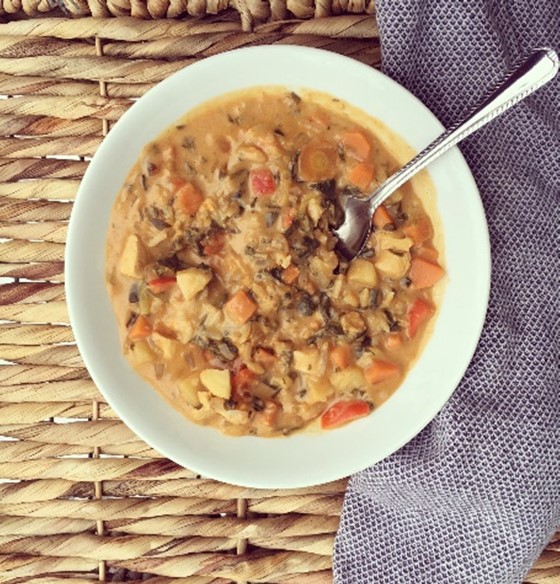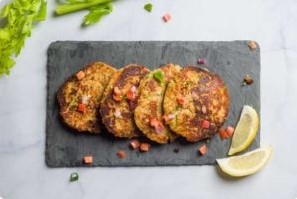Oils

Why do we need oils?
Oils are not a food group but provide essential nutrients and so are included in USDA recommendations for what to eat. Fat-soluble vitamins A, D, E, and K need fat to be transported and absorbed by the body. Note that only small amounts of oils are recommended.
Different types of fats
SATURATED FATS are usually solid at room temperature and come mostly from animal sources such as butter, milk, yogurt, cheese, and meat. However, palm and coconut oil are also saturated fat. Saturated fats should be consumed in moderation because diets hgih in saturated fat have been linked to heart disease.
TRANS FATS have been chemically changed and are found in margarine and many store-bought baked goods. Trans fats in processed foods are listed as hydrogenated oil or partially-hydrogenated oil in the ingredient list. Trans fats should be avoided, since they increase LDL ("bad") cholesterol and lower HDL ("good") cholesterol.
POLYUNSATURATED & MONOUNSATURATED FATS are considered "healthy fats" and are found in vegetables, fish, and nuts. These fats can help lower cholesterol. Polyunsaturated and monounsaturated fats should make up most of the fats you eat.
OMEGA-3 POLYUNSATURATED FATTY ACIDS are a very healthy type of fat that our bodies need and are found in cold-water fish and other foods like soy, flax, canola oil, and walnuts.
What fats should we eat?
"HEALTHY FATS" (polyunsaturated and monounsaturated fats) include:
- Avocados
- Canola oil
- Cold water fish (salmon, tuna, mackerel, herring, trout, sardines)
- Nuts
- Olive oil and olives
- Soybean oil and tofu
Unsaturated Fats and Serving Sizes
|
Unsaturated Fats
|
Serving Size
|
Fat (grams)
|
|---|---|---|
|
Walnuts
|
1 ounce
|
18
|
|
Avocado
|
1/3 of an avocado
|
9.7
|
|
Dark Chocolate
|
1 ounce
|
9
|
|
Tofu
|
3.5 ounces
|
4
|
|
Tuna
|
3.5 ounces
|
1.3
|
How much oil should we eat?
Daily allowances for oils depend on age, sex, and level of physical activity. In general, the allowance for most people is 5 to 7 teaspoons of oil per day.
How much fat should we eat?
When thinking about fat intake, look at the percent of total calories or grams of fat you eat each day.
Fats & Calories
|
Type of Fat
|
Recommended % of Total Calories
|
Calories
|
Grams of Fat
|
|---|---|---|---|
|
Total
|
20-35%
|
400-700
|
44-78
|
|
Saturated
|
<10%
|
<200
|
<22
|
|
Trans Fats
|
<1%
|
<20
|
<2
|
Healthy tips for fats and oils
- Limit your intake of saturated fat by decreasing intake of full-fat dairy and meat products. Try replacing red meat with poultry, fish, beans, and nuts when possible and switch from whole milk and other full-fat dairy products to lower-fat versions
- Try to eliminate trans-fats from your diet. Limit your intake of store-bought baked goods like crackers, cookies, and cakes. Check nutrition facts labels for trans-fat and ingredient lists for partially-hydrogenated oil.
- Eat omega-3 fats and/or monounsaturated fats every day. Good sources of omega-3 fats include fish, walnuts, ground flax seeds, and canola oil.
What oil should I use?
High in monunsaturated fat and antioxidants but can be expensive. Olive oil is good to use in salad dressings and sautéing.
Low in saturated fat and is relatively inexpensive. Canola oil is an all-purpose oil and can be used for cooking and dressings.
Can be made from any (or a combination of) the following: soybean, sunflower, or safflower oil. These oils are inexpensive and are mostly unsaturated fat. Vegetable oils are good fpr baking.
Comparing foods
|
Food
|
Serving
|
Fat (grams)
|
|---|---|---|
|
Whole milk
|
1 cup
|
8
|
|
Low-fat milk
|
1 cup
|
2.5
|
|
Nonfat milk
|
1 cup
|
0.2
|
|
Full-fat yogurt
|
1 cup
|
3.8
|
|
Low-fat yogurt
|
1 cup
|
1.9
|
|
Nonfat yogurt
|
1 cup
|
0.1
|
|
Ground beef, 70% lean
|
3 ounces
|
24
|
|
Ground beef, 90% lean
|
3 ounces
|
9
|
|
Cheddar cheese
|
1 ounce
|
9
|
|
Cheddar cheese, low-fat
|
1 ounce
|
6
|
Ways to Eat More Unsaturated Fats
- Cook with olive oil. Use olive oil for stovetop cooking instead of butter, margarine, or lard.
- Use healthier oils and fats in baking. Try canola or vegetable oil instead of butter or margarine.
- Eat more avocados. Check for lower prices when avocados are in season. Add avocados to sandwiches or salads.
- Add nuts. Sprinkle a few nuts on salads or hot cereal.
- Make your own salad dressing. Create your own healthy dressing with 3 Tablespoons olive oil, 2 Tablespoons vinegar, salt, and pepper. Garlic, Italian seasoning, lemon juice, or mustard can be added for flavor.
Remember- you want to replace saturated fats with unsaturated fats - not just add more fat to your diet!
Featured Recipes
Peanutty African StewCombine rice, broth, onion, garlic powder, sweet potato, tomatoes, and salt in a soup pot. Bring to boil; then turn down to medium low. Cover; simmer for 10 minutes.Stir in peanut butter and milk. Return to gentle simmer and cook uncovered for 5 minutes.Stir in spinach and cook until wilted, 2 to 3 minutes. Remove from heat. Ladle stew into bowls. If desired, top with peanuts and green onions. |
 |
Salmon PattiesWash fresh vegetables (if using).Collect, mince, and measure all Ingredients beforestarting to prepare the recipe.Open salmon and drain liquid measuring cup. Addlemon juice and cold water to the salmon liquid tomake 1/2 cup liquid total and set aside.Put the salmon in a separate mixing bowl. Mix In thecelery (if using), green pepper (if using), and onion.In another small bowl, beat the eggs. Then, add themto the salmon mixture.Add the bread or cracker crumbs, flour, pepper, andthe salmon liquid mixture to the salmon mixture, andstir until all ingredients are mixed together.Use 1/3 cup measuring cup to measure salmonmixture. Shape Into a 1/2-inch-thick patty, and placeon a plate. Repeat to make 6 patties.Heat the oil in a skillet over medium heat, then add 3patties. |
 |

 You may require
You may require